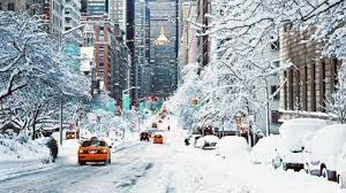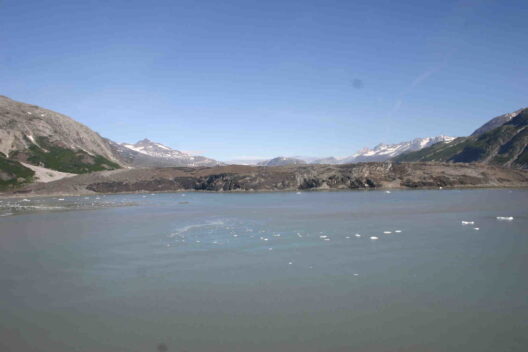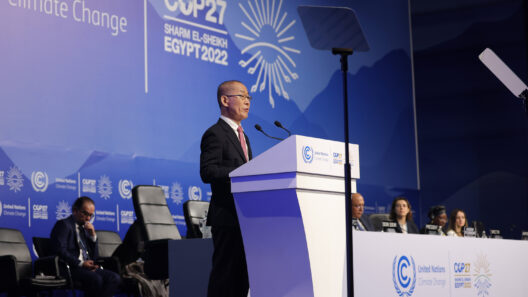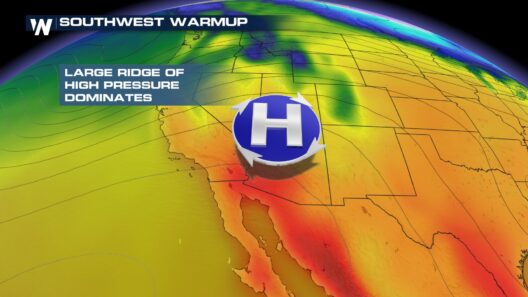New York City is a mesmerizing metropolis, often synonymous with its iconic skyline, bustling streets, and diverse culture. But beyond the vibrant urban life lies an intricate tapestry of climate phenomena, a reality that shapes daily life for millions of residents and visitors. The climate in New York City reflects its geographical position, urban infrastructure, and the broader implications of climate change that loom over cities globally.
The city experiences a humid subtropical climate that transitions towards a continental climate as one moves northward. This peculiar blend results in four defined seasons—spring, summer, autumn, and winter—each with distinct characteristics. The city’s location on the eastern seaboard of the United States and its proximity to the Atlantic Ocean significantly influence its climatic patterns. The waters of the ocean moderate temperatures, yet the urban heat island effect exacerbates temperature variations.
Spring in New York is a burst of rejuvenation. Typically spanning from March through May, this season brings mild temperatures that range from the upper 40s to the low 70s Fahrenheit. The city’s parks and streets become adorned with flowering blooms, as cherry trees and magnolias release their vibrancy. However, despite this picturesque scene, unpredictability lingers with sporadic rain showers and occasional cold snaps. This variability prompts a collective excitement among the city’s inhabitants, many of whom transition their wardrobes, bidding farewell to winter wear in favor of lighter fabrics.
Summer unveils a different narrative. From June to August, temperatures can soar to uncomfortable heights, often breaking the 90-degree Fahrenheit barrier. Humidity becomes a commonplace companion, enveloping the boroughs in a steamy embrace that can lead to oppressive conditions. This extreme weather highlights the urban heat island effect, where concrete, asphalt, and glass absorb heat throughout the day and release it slowly at night, contributing to higher temperatures compared to surrounding areas. The sultry cityscape transforms as residents flock to the Hudson and East Rivers, indulging in cool enclaves of waterfront parks. However, the thick air also breeds urban fog, adding an ethereal quality to the skyline, where clouds and buildings intertwine in a mystical dance.
As summer fades, autumn blankets the city with a kaleidoscope of colors. September to November is characterized by crisp air, vibrant foliage, and a palpable sense of change. Temperatures begin to recede, dropping from the mid-70s in September to the low 50s by November. The iconic fall season draws crowds to Central Park, where the trees put on a spectacular show of reds, oranges, and yellows. This seasonal metamorphosis not only signifies aesthetic beauty but also reflects the cyclical nature of life and the critical importance of biodiversity in urban planning.
Winter introduces another layer of complexity to New York’s climate. December through February is marked by cold temperatures that frequently dip below freezing, yet the city’s vibrancy remains undimmed by the frigid conditions. Snowflakes occasionally grace the streets, transforming the concrete jungle into a winter wonderland. The unpredictability of winter weather brings both challenges and opportunities for social interaction, as residents engage in outdoor activities like ice skating or festive markets. Yet, it serves as a stark reminder of the mounting impacts of climate change. Warmer winters, reduced snowfall, and erratic weather patterns pose an existential risk not only to the environment but also to the infrastructure that supports urban life.
The phenomenon of urban fog deserves particular mention as it merges with New York City’s skyscraper-dominated skyline. This meteorological occurrence, which commonly arises during temperature inversions, enhances the city’s atmospheric mystique. Fog can obscure iconic landmarks, creating a sense of enigma while also assisting in the accumulation of pollutants, thereby exacerbating air quality issues. The interplay between skyscrapers and fog showcases the duality of urban life—breathtaking architecture juxtaposed against the vulnerabilities arising from environmental factors.
The urban microclimate has garnered significant attention as researchers explore the broader implications of climate change on city planning and public health. With rising global temperatures, increasing sea levels, and frequent extreme weather events, cities like New York must develop resilient strategies to mitigate adverse effects. Green infrastructure, which includes green roofs, permeable pavements, and urban forests, plays a pivotal role in combating the heat island effect while enhancing biodiversity and community well-being.
Furthermore, the fascination with New York City’s climate can be attributed to its dynamic relationship with humanity. The ebb and flow of seasons reflect not only environmental shifts but also the social fabric of the city. Residents and tourists alike adapt their lifestyles around climatic conditions, hosting street fairs in warm weather, savoring hot cocoa during chilly evenings, and participating in outdoor events as the seasons shift. Such rituals underscore the deep connection between climate and culture, revealing how weather influences daily life and social interactions.
In essence, the climate of New York City is as multifaceted as the city itself. From seasonal transformations to urban fog enveloping skyscrapers, each element contributes to the unique character of this metropolis. Understanding the complexities of its climate is vital for fostering a sustainable future and addressing the pressing realities of climate change. As the city navigates these challenges, collective action emerges as a fundamental principle that not only bolsters urban adaptability but also preserves the essence of what makes New York City a monumental global hub.







